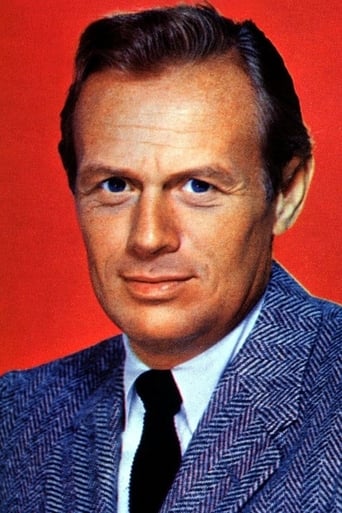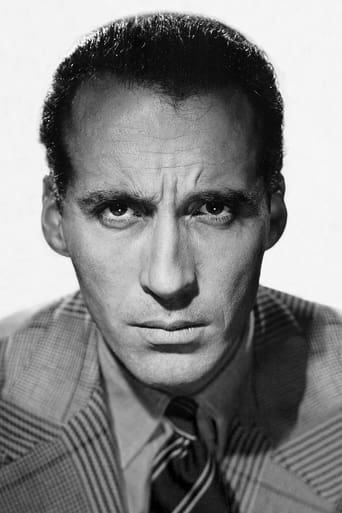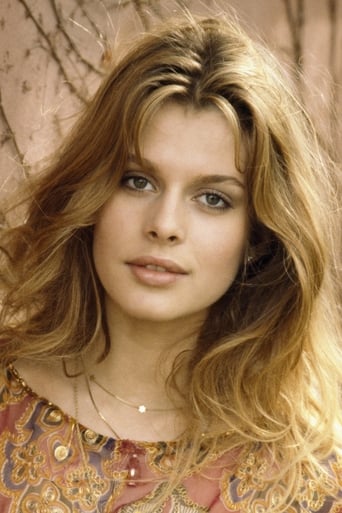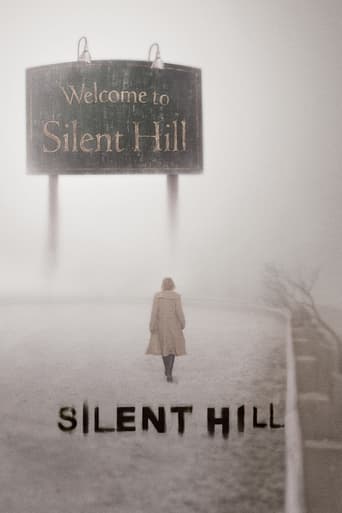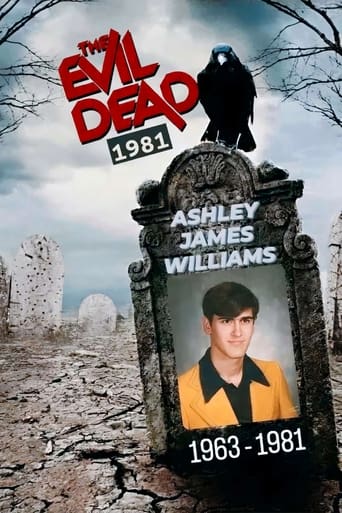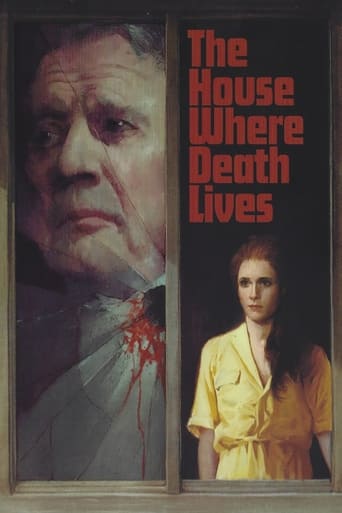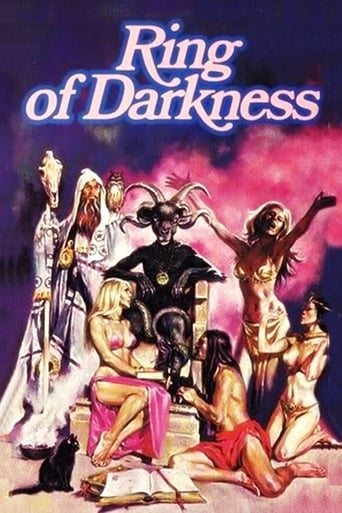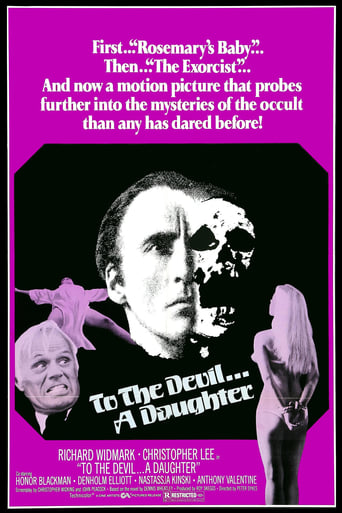
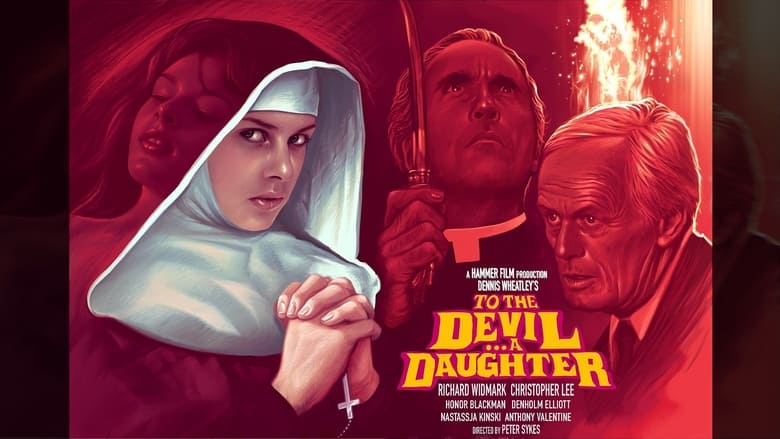
To the Devil a Daughter (1976)
An American occult novelist battles to save the soul of a young girl from a group of Satanists, led by an excommunicated priest, who plan on using her as the representative of the Devil on Earth.
Watch Trailer
Cast
Similar titles
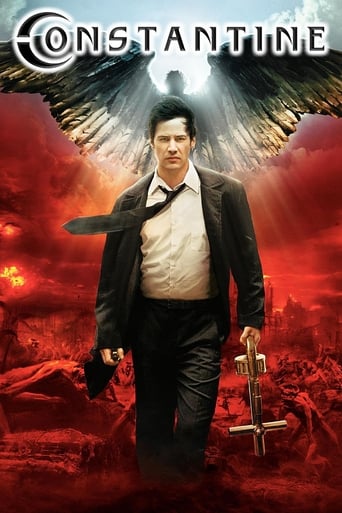
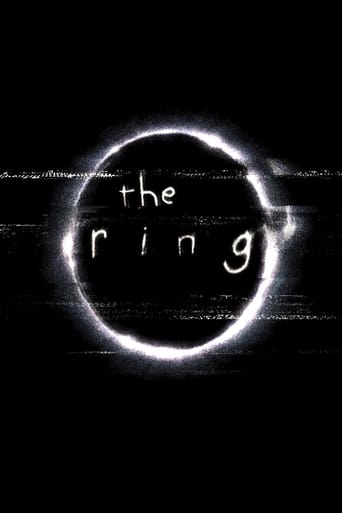
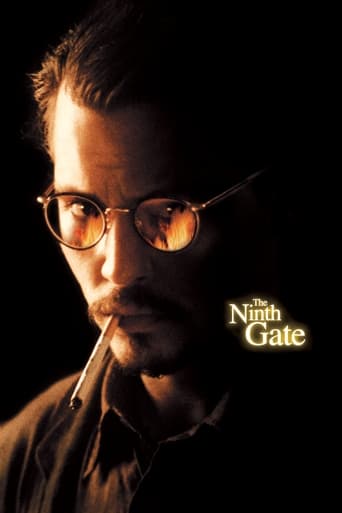
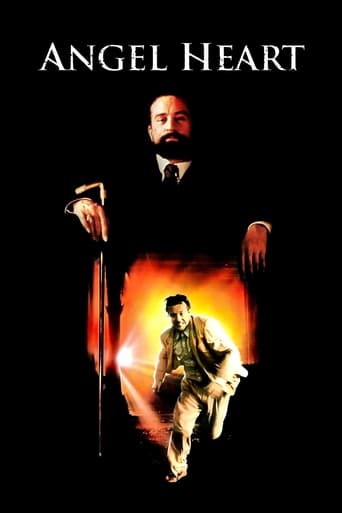
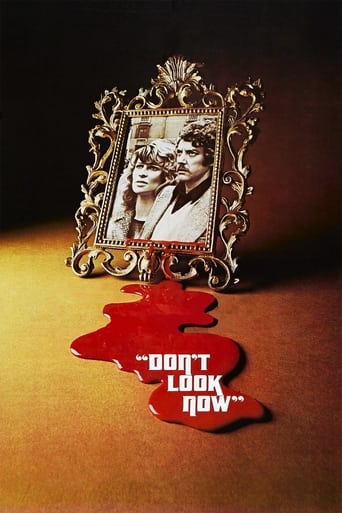
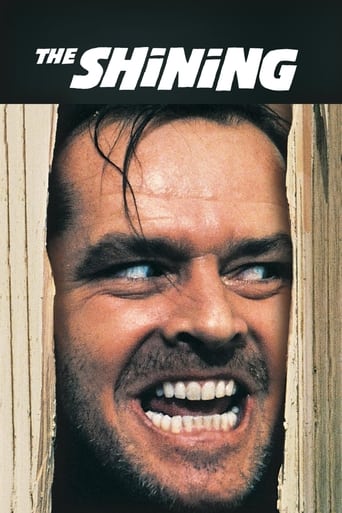
Reviews
Good concept, poorly executed.
Absolutely the worst movie.
Absolutely Fantastic
Through painfully honest and emotional moments, the movie becomes irresistibly relatable
"To the Devil a Daughter" was Hammers final throw of the dice in attempting to re-invent themselves after their films were no longer finding an audience in America.This co-production between England and Germany was Hammers last chance in attempting the above.The film is interesting in offering a glimpse of what might have been but a rather thin plot and confusing narrative - not to mention that stupid ending, all conspire to let the side down. Christopher Lee is well cast in a role that offers him something different to play and Richard Widmark does well as the leading hero.According to fellow actor Anthony Valentine, Widmark was rather a challenge to work with and threatened to return to America a few times.Dennis Wheatley - whose book this film is based - was horrified and furious with the final results. He stated in an angry letter to Hammer that their film beared no resemblance to his novel in the slightest. With that in mind, he refused to allow Hammer to adapt any more of his work. I can hardly blame him.
The last of the original Hammer horror films, what began with a bang in the form of "The Curse of Frankenstein" 19 years earlier ends with a whimper here. I suppose that it's appropriate that Christopher Lee was there at the beginning and the end. On the bright side, Lee is characteristically excellent as the intense and suitably creepy Father Michael Rayner, an excommunicated Catholic priest and the leader of a group of Satanists called the Children of Our Lord. This was his last Hammer film until "The Resident" 35 years later. Honor Blackman and Denholm Elliott, who makes his only Hammer appearance here, were also very good but their roles were less well developed. The same is true of Michael Goodliffe in his final film appearance. Unfortunately, he committed suicide only two weeks after it was released. Richard Widmark is quite a good leading man but the more likable and charismatic Cliff Robertson was considered for John Verney and I wish that he had been cast instead. It's interesting that, towards the end of its original incarnation, Hammer returned to its early to mid 1950s practice of hiring well known American actors in the hope that they would appeal to American audiences, something which they only really did with Bette Davis and Joan Fontaine in the 1960s. I have never seen Nastassja Kinski in anything else but I can't say that I was terribly impressed by her acting in the film, though in fairness I am sure that it is difficult to act in a language that isn't your first one, particularly for child actors.Due to the storyline, the fact that it is based on a Dennis Wheatley novel and Lee's presence, it's impossible not to compare the film to the superlative "The Devil Rides Out" but it falls far short of that film in every respect, I'm afraid. It's badly structured and often boring. As part of the final scene was cut, it ends very abruptly. It seems to owe more to films like "Rosemary's Baby" and "The Exorcist" than it does to any of Hammer's very best films. It also has some superficial similarities to "The Omen", though that is only a coincidence since that film was released three months later. What really bothered me about though was the fact that it was needlessly gory in the way that earlier Hammer films never were. The weird sex scenes were disturbing and I don't mean that in a good, horror film way. They were particularly so since they involved Nastassja Kinski who was only 14 years old at the time in spite of the fact that she played an 18-year-old. She also had a full frontal nude scene towards the end of the film. It wasn't illegal at the time in the UK but was certainly in very poor taste. I never thought that I'd come across a scene in a Hammer film more tasteless than the incongruous rape scene in "Frankenstein Must Be Destroyed" which was designed to add sex appeal to that film but I was proved wrong, unfortunately. Could they not have hired an older actress? Even if they had, the nude scene still wouldn't have added anything to the film but it would have at least been less shameless and exploitative.Overall, this isn't the worst Hammer horror film - I still think that that dubious distinction goes to "The Horror of Frankenstein" - but it's very close. It was released in 1976, two years after the last Hammer "Dracula" and "Frankenstein" films. 1975 was the first year since 1946 that Hammer did not release at least one film. This film was a co-production with West Germany while "The Legend of the 7 Golden Vampires" and "Shatter" were co-productions with Hong Kong so the studio was clearly running out of money faster than it was making it. The last original Hammer film was "The Lady Vanishes" in 1979, which managed to be even worse than this one (which, for all its flaws, has some nice performances). It was also a big flop that nearly bankrupted Hammer. While it made two short-lived TV series in the 1980s, "The Lady Vanishes" was the last film produced by Hammer until the studio, like Dracula in so many of its films, was resurrected in 2008.
The last Hammer Horror film features Nastassja Kinski in only her third film, and her first major role. The film was banned in many countries because she was only 15 at the time.There are several fine actors in this film. There is Oscar-nominee Richard Widmark (Kiss of Death), Christopher Lee (The Wicker Man, LOTR) in what may be his finest performance, Honor Blackman (Goldfinger), and Oscar-nominee Denholm Eliott (A Room with a View, Raiders of the Lost Ark).While Sister Catherine (Kinski) is being cared for by novelist John Verney (Widmark) on the eve of her 18th birthday at the request of her father (Eliott), we flashback to her bloody birth, bursting from the belly of her mother, presided over by a smiling sinister Father Michael (Lee), as the others present turn away in disgust.While Father Michael is using his Satanic powers to draw Sister Catherine to her destiny, Verney endeavors to protect her. A battle of will and dark forces ensues. Verney realizes the seriousness of his mission as Sister Catherine escapes after burying a comb in the head of Anna Fountain (Honor Blackman).That was one slimy demon that was crawling over Sister Catherine prior to her baptism, and that was a very tempting offer made to Verney at the end. Willpower to resist that offer is more than I have.
The last theatrical film from Hammer takes considerable liberties with Dennis Wheatley's 1953 novel, although as the novel is a pretty hokey affair with black and white heroes and villains, this might not be too much of a bad thing. Natasha Kinski - jailbait at 15 - is the young girl chosen from birth to become, on her 16th birthday, the avatar of Astaroth, aka The Devil. Christopher Lee is the excommunicated priest whose sect aims to bring this feat about, and Richard Widmark is a writer of occult pulp fiction who gets embroiled in the case and ends up an unlikely knight on the side of light. Widmark's character is hard-boiled and cynical (his publisher says that he won't give up writing occult trash as long as it's profitable) and therefore has a little more complexity than the average Wheatley hero.The film is a little plodding, is under-budgeted and under-developed in the script department. Some of Wheatley's more outre plot elements have been lost, like the jars of homunculi, and too much of the action is trapped in front rooms. But there are jollies to be had along the way: the one homunculus who does appear is a little red wriggling thing of genuine repulsion; the satanic rituals are lurid and strange; some of the camera angles and music pieces are genuinely disorientating; and foremost, Lee gives a very fine turn indeed as the head of the Satanic pack. There is some question as to whether the Satanists really are evil - Astaroth certainly looks a more attractive god than the suffering Christ on his cross, the Satanists' dogma of man being his own creative force is better than the Church's guilt-mongering and they stop at underage sex (why doesn't Lee take the luscious Kinski at the orgy?); on the debit side, they do tend to demand the death of their female followers; Lee sacrifices a horrid child at the end and the world of Astaroth they plan sounds a little too much like total chaos.Lee, as I say, is the best thing in the film. The book's central villain is called Canon Copley Style (a much better moniker than Father Michael Rayner, as Lee's character here is called) and was based on the noted occultist Montague Summers (as Mocata in The Devil Rides Out is based on Crowley). Lee isn't as plump as Summers was, but certainly brings a goodly amount of conviction to the role of a man who believes in the powers of darkness with all his might.The ending is nicely ambiguous, as one is not quite sure whether Kinski was saved before she could be inhabited by Astaroth or not...
